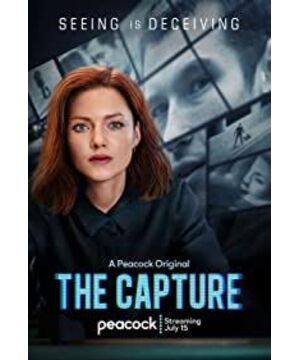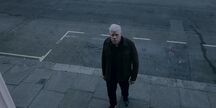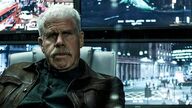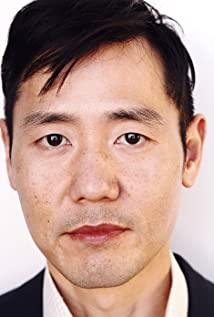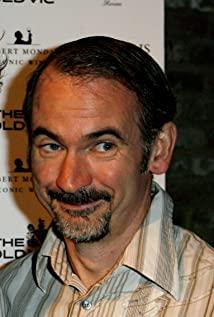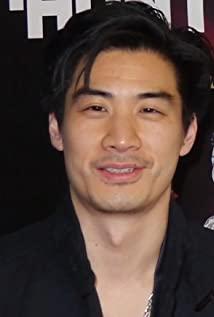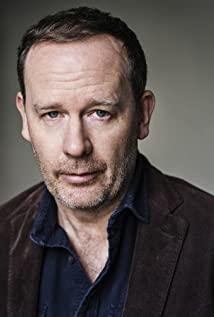"The image is the subject." -Andre Bazin
"'Taking flowers to join trees' is not about falsifying evidence, but reenacting reality." "It's not reality that matters, but what we want the public to believe." - Lines from The Capture
Although each type of art relies on the corresponding medium, in the big family of art, there are few art types that have been placed in a complicated situation by their own media characteristics for a long time like film: on the one hand, its own The "diversity" of the media has helped the film to gain a prominent position in the art forest, and it can even be called one of the most representative forms of expression of art and popular culture in the last century; on the other hand, the "hybridization" of its own media Sex" puts it in such a tangle of forces that the film is in constant danger of losing itself. In this complex medium of film, we can give an example: film can be regarded as a fictional story world, in which every frame is a fictional image; at the same time, film itself can also be regarded as a fictional image. A generalized record or surveillance, each frame of image is also a surveillance image about that time and place. So, what exactly is a movie?
In fact, in the course of the development of film, fictional images and surveillance images have always been in the "rabbit-duck illusion". The early "factory gate" (1895) and "train entering the station" (1896) are not only a kind of record, but at the same time have the meaning of "monitoring". However, the fictional narrative paradigm established by Hollywood obscures this mode of existence with the nature of media ontology. On top of movies as surveillance images, people always see preconceived fictional images. In thinking about the relationship between the two, many films can find their place in the transition between fiction and surveillance. On the fictional end, such as the "Mission Impossible" series, surveillance is only an element of the narrative or scene. In "Eavesdropping Storm" (2006), surveillance has become the main content of the film; Eyes of Dragonfly (2015) tells stories directly with surveillance images of “readymades”, whose cinematic identity slips into contemporary art. Contrary to these two poles, the 2019 six-episode miniseries "Truth Capture" directed by Ben Chenan and broadcast on the BBC does not only use surveillance as a secondary element of performance, nor does it completely abandon the traditional expression of the film, it presents a It is a trend of transition from fiction to surveillance, from traditional film to post-film, and this trend or the "indistinguishable point" between the two states is the "theoretical moment" worthy of our attention. Behind the story of a confusing political conspiracy, "Truth Capture" attempts to reveal the media status of contemporary films at the level of image ontology, and at the level of visual expression, it tries to use new digital rhetoric to integrate with traditional audio-visual expressions. The story itself has also become an era metaphor for the complex truths of contemporary digital and networked societies.
1. Film Elegy: From Photographic Image Ontology to "Cinematic Graphics"
From film to post-film, the debate revolves tightly around mediumness. From traditional film to digital images, the film has experienced both an innovation and a "break". "Truth Capture" generally tells a story of "what you see is not what you get". The events that the audience sees through the naked eye are overturned one by one, and the image ontology based on the objectivity of film is ruthlessly mocked.
The whole series revolves around two clues: Emory, a soldier who participated in the Afghanistan war, killed prisoners of war who had surrendered on the battlefield, and in the court trial, the head-mounted surveillance video of the soldier as key evidence was technically His "sound and picture dislocation" narrowly escaped sanctions, but he was then drawn into a larger political conspiracy: surveillance video of himself and his female lawyer was tampered with as they separated at the station, and Emory was charged Murdered his own defense lawyer, and the surveillance footage in front of him made him unable to be sure whether he was really innocent; in another clue, Kelly, as the main person in charge of the Emory case, was in the process of full pursuit. Discovering all kinds of tricks in the surveillance video made her doubt the things she once believed. In both of these clues, Emory and Kelly once thought they had the objective facts in their hands, but the development of events made them doubt the images they saw again and again.
"Truth Capture" is interesting on a film-theoretical level precisely because of its unconventional interpretation of the nature of the image. In traditional film ontology, the indexability of film is the decisive condition that distinguishes film from other art forms. Kracauer believes that the film medium is the synthesis of film material and film techniques. The former focuses on "accidental events", spontaneous and endless objective worlds, while the latter can use various artistic techniques, but always revolves around photorealism. purpose. Similarly, Bazin also believes that the difference between photography and painting is reflected in its intrinsic objectivity. "Photographic images are actually supplements to natural objects, not substitutions." Supplementation means objective revealing, while substitution is subjective expression. Qualitatively speaking, for the traditional film based on the ontology of photographic images, although the story can be fictional, the objective indexability of the underlying film is unquestionable. However, the development of the plot of "Truth Capture" is constantly challenging this traditional belief, and two clues in the story refer to the failure of the objectivity of the image. For Emory, the surveillance images did not match what was really happening on the battlefield, and the dislocation of the real and the fake helped him clear his name. But then what happened at the bus stop turned surveillance into his antithesis: Emory saw the lawyer get on the bus, but surveillance showed that the lawyer didn't, and he beat her. In Kelly's story line, she initially directly confirmed Emory's murder of the female lawyer based on the surveillance footage she saw, but in the subsequent investigation, when she sent her subordinates to the location she was monitoring, the images gave She made a deadly joke: the subordinates have reached the designated location, but there is no trace of them in the monitoring screen. Although all this takes place in the fictional world of the film, it undoubtedly has a reflexive thinking about film, that is, in the digital age, the film ontology established by film is almost dead.
When the film is no longer an image based on an objective index, and the image is no longer the subject, what will the film become? Let's go back to Bazin again. When talking about the ontology of photographic images, Bazin pointed out two confusions about realism in art, namely aesthetic realism and psychological realism. The former achieves the ideal balance of concreteness and essence; the latter is represented by photography. Compared with painting, it excludes the subjective participation of people for the first time. Films built on the ontology of photographic images add the fourth dimension of time. After the dimension, it seems that the realistic appeal of artistic independence has truly been realized. However, when the basic medium of the film "documentation" world changed from chemical film to digital components, the modifiability of the latter caused a reversal of the film itself to painting. In this regard, Lev Manovich pointed out when discussing the film built on the new medium, music films since the 1980s have shown the combination of film and computer graphics. Today's development of video games has blurred the boundaries between traditional films and various new media arts. When new technologies were combined with nineteenth-century moving images, contemporary cinema became what Manovich called "cinegratography."
In "Truth Capture", Manovich's "cinematic drawing" is called "correction", which is an official image manipulation technique with a conspiracy theory nature. images can be seamlessly modified, and even replaced in near real-time. The scene of Emory beating up the female lawyer and the situation in which Kelly couldn't see her subordinates in the surveillance were all due to the technology of "connecting flowers and trees". Although this technology already exists in reality, it is undeniable that the expression it has reached in the play still has a touch of science fiction. At the end of the film, Frank, a British government official played by Ron Perlman, shows the two protagonists what "removing flowers and trees" has done and what can be done in a "post-movie scene": according to people's social network and various surveillance in the city, etc. For the images captured in the digital environment, the computer can build an image database for each criminal suspect suspected by the government and build a corresponding 3D model, that is, a digital "Avatar". The pixels are high enough that they can theoretically combine and collage images in their hands at will. For post-film theorists like Manovich and Andre Godero, the "movie turn to animation" is an important logical trend in the development of cinema in the digital age. The "moving flowers and connecting trees" in "Truth Capture" is actually converting real people into "animations" that can be manipulated freely. In terms of the lines in the play, what it can achieve is a purely imaginative and unscrupulous "100%" real-time manipulation of images".
If the film body of the film image is replaced by digital manipulation, does this mean the disappearance of the "objectivity" of the film image? In this regard, "Truth Capture" also gave an interesting answer. The play shows a photo of General Grant during the American Civil War, which is called "the first composite photo in history", because General Grant did not appear in the Battle of Petersburg, the photo is his head Synthesized on another soldier. But the official Frank's explanation for this is "of course he was there, just not taking pictures." In the worldview set up in the play, the reason why the British government took the risk of trampling on the judicial system to tamper with the image is precisely because they firmly believe that the image that has been modified to a certain extent can restore the objective facts: there is clearly "conclusive evidence" It can be concluded that someone is a terrorist, but these evidences cannot be used in court, so they have to use the "removing flowers and trees" technology to forge a video of a terrorist, and use it as court evidence to determine their crimes. This is an act of using "fake" to approach "real". That's why the government official in the play pointed out: "Transferring flowers and trees" is not forging evidence, but "reenacting reality". As for whether it is possible to obtain the truth desired in the political sense through this means, we do not know. But one thing is certain, that is, "Truth Capture" is trying to tell us: the truth of the film is not the truth of the image, and the sublation of the indexability of the film can approach the truth of the image at the philosophical level. Although digital cinema has abandoned the analog image, the image is no longer an engraving experiment performed on the original film, but the synthesized image may be more realistic than the analog image. Although it abandons the external "shape" of things to a certain extent, it is in the process of infinitely approaching its "god". In other words, although digital images no longer fully follow the reproduction of reality in the psychological sense, this does not mean that it abandons the authenticity of images in the artistic sense. Bazin said of the great painters who "can both grasp reality and incorporate reality into the art form." In the post-film era, the film has returned from the realism of photography to the realism of painting, and has once again returned to a state of confusion between aesthetics and psychology.
2. Digital Rhetoric: From Innovation to Convergence
As a work with distinct traces of digital aesthetics, the post-film expression of "Truth Capture" is not only a metaphor for the decline of film indexing at the story level, but also reflected in its specific image rhetoric. From the perspective of media environment, each medium has a unique set of symbolic structures, so post-movie based on digital media will inevitably present many new artistic language or rhetorical features in terms of expression. In this regard, we can start from several aspects such as "interface", "pixels" and "carton".
The images of traditional films can be regarded as a "window" for reproducing the world, a "picture frame" for the author's expression, and even a "mirror" for self-referentiality. In the digital age, we face a variety of screens every day, and the transformation of image presentation carriers makes the metaphor of the image itself change. "Truth Capture" presents us with a large number of screen "interfaces", which are either rows of monitoring walls or specific monitoring images. Compared with the metaphor of traditional images, the "interface" in "Truth Capture" has an interesting "hybridity". On the one hand, it has the characteristics of a digital "interface", that is, as a display of information, which is the primary function of the various screens in our lives. In this mode, the monitoring interface in "Truth Capture" should have appeared as another layer of reproduction information of the story world in the film, mainly exerting the cognitive function of the image rather than the aesthetic function in the narrow sense. For example, our computer desktop is an interface on which we can play various types of aesthetic objects, but the desktop itself exists first as a cognitive interface. Therefore, when there is a surveillance screen in the movie, its main post-film function should be to emphasize the audience's new cognitive appreciation mode, rather than the traditional narrow aesthetic mode. However, since "Truth Capture" deliberately mocks the objectivity of the film with stories, on the other hand, the "interface" that should appear as a cognitive function has both the metaphorical meaning of the "window" and "picture frame" of the image. This "hybridity" is exactly why the film can be used as a typical example of the transition from traditional film to post-film.
One of the core logics of the transition from "windows" to "interfaces" is the difference in the nature of the constituent elements. When we talk about the scenery outside the "window", we see the existence as a whole; but when we talk about the content of the "interface", the existence of the elements is modular. Among them, "pixel" is the underlying logic of modularity. This pixelated rhetorical aesthetic is particularly evident in the title design of "Truth Capture". In this nearly one-minute segment, the pixelated nature of the image is directly exposed to the viewer's eyes, and it has at least a triple rhetorical effect. The first is "modification". Every pixel of the digital image can be modified, and the title shows us the content that is constantly being modified in the surveillance: the whole process of people's existence and disappearance from the screen. The second is "spatial montage," or split-screen visual design. The image composed of pixels means that each pixel is an independent screen. From the perspective of composition, each digital image is actually realized by juxtaposing thousands of images in space. In other words, multi-screen presentation is a natural and easy-to-implement outcome of the digital image rhetoric. The split screen rhetoric runs through almost the entire title design. Again, it's "sawtooth". "Sawtooth" is a unique digital rhetoric that has a very mature expression in the " Unfriended " series, it's pixel jumble, pull or - in a more literary expression - the vision of death show. The jaggies that appear in the title of "Truth Capture" have the function of montage between traditional pictures, but more importantly, it often accompanies the disappearance of characters, which is to a certain extent a unique horror aesthetic in the digital age .
Every time "jaggies" appear, it means a long or short "stutter" of the picture. Among the various post-film rhetoric we have mentioned, “stuttering” is the one that is most easily experienced by audiences, because it disrupts the conventions of smooth screening of traditional films to achieve its own aesthetic effect. As we all know, in traditional movie screening, "stutter" means the failure of the film and projector, and in severe cases, there may even be an "Alfredo-style disaster" reflected in "Cinema Paradise". But in "Truth Capture", the director made a "post-movie joke" to the audience. In a court interrogation scene, the film pre-played the actual battlefield recorded by the soldier's head-mounted surveillance video, but when the clip ended, there was a "stutter" for nearly two seconds. Unexplained audiences may once think that There is a problem with your computer or player. Here, the director is actually organically integrating the perception mode of new images in the digital age with traditional film creation. Kristin Daly proposed the concept of "Cinema 3.0" in 2008, and specifically mentioned images similar to head-mounted video recordings in her discussion. For example, Catherine Bigelow's The Hunt for Bin Laden (2012) is a traditional film in the first half, but in the second half, by switching the perspective to the soldier's night vision camera, we can see the film as It is a "movie 3.0" image in a broad sense. Although the concept of "movie 3.0" has certain ambiguity in theory, this formulation provides a concept cluster of "family similarity" for new types of dynamic images such as network video, surveillance video, and even mobile phone video.
However, considering the commercial appeal of the entire series, "Truth Capture" cannot be as wildly experimental as Xu Bing's "Eye of the Dragonfly", but as a work with a distinct post-film consciousness, it will not Completely ignore the new possibilities that digital imaging brings to cinema. In fact, rather than saying that "Truth Capture" is an ideal post-film work, it is better to say that it is an attempt to "go" to post-film. The classic aesthetic principles established by traditional film are undoubtedly the theoretical and practical objects that post-film expression should reflect on and face directly. In "Truth Capture", what we see is how the new film rhetoric is organically integrated into the traditional film expression, the director strives to reflect on the contemporary media society in a wonderful political conspiracy story, and strives to make a traditional fictional On top of the video, another level of surveillance video is presented to the audience. As an epoch-making collection of images, August Sander's "Face of the Times" published in 1934 has an important aesthetic significance in that it not only highlights the content identity of the subject, but at the same time serves as a measurable or classifyable object. object, which is "two images in one image". Likewise, the overall rhetorical significance of "Truth Capture" is to allow us to see a traditional film while also seeing the post-film hidden behind it. In the entanglement and fusion of these two kinds of images, the final rhetorical effect is the "movieization" of monitoring and the "monitoring" of movies. If "Eye of the Dragonfly" is regarded as a work of contemporary art rather than a film work in the strict sense, one of the reasons is that it directly uses surveillance materials from all over the world as a finished film, and lacks images in the "previous" The aesthetic concept of the editing stage. In contrast, although there are also a large number of surveillance images in "Truth Capture", these surveillance images have obvious traces of cinematization in terms of composition, angle, tone, and the subject in the painting. "Interface", "pixels", and "carton" mainly appeared as rhetorical devices, but failed to become the lowest basic principles of the film's aesthetic expression. In short, the post-film rhetoric of "Truth Capture" has been silently "naturalized" by traditional films in the face of the powerful contemporary film industry.
3. Political Metaphors: From Post-Film to "Post-Truth" Era
In the two-way movement between surveillance and film, post-film's reflexive thinking about film itself is often expressed as "movie about film" while telling a story. On the one hand, "Truth Capture" tells a story of political suspense in the digital and Internet age, and on the other hand, it nests "another movie" in the story, trying to blur the original clear boundary between surveillance and movies.
In the scene of Emory and the female lawyer separating, it was an actual incident that the female lawyer got on the bus after the two separated, but the surveillance showed that Emory and the female lawyer were tearing at each other on the side of the road. results. Here, the director shows the audience the whole picture of this process with the expression of "play within a play". In order to be able to replace the surveillance images in real time, a special camera team to reveal the government surveillance conspiracy recorded 25 versions of the video in advance, taking all possible unexpected traffic and clothing situations into account. A stuntman with a similar stature to Emory, dressed in Emory's military uniform, rehearsed and staged a "breakup scene" with a female lawyer. In this dark humorous expression about the film itself, the person in charge of the special camera team in the film even shouted "action". The bus that appears repeatedly in the picture is also of great significance in their "crossover", because if the "invisible clip" between the original surveillance picture and the pre-recorded picture is to be achieved, the bus passing quickly can become a The ideal "clip point". Interestingly, in traditional films, long shots are generally used as part of montages, but in this mutual generation of surveillance and film, the montage of synthetic collages disguised as long shots, played its role in Key features of the digital age. Looking back at the footage shot by the special team, the stuntman's face was replaced by the computer with Emer's expressionless face, while the staff debated whether to re-synthesize his angry expression to better match the ideal mood. , the female lawyer pointed out that Emer's expressionless expression can be understood as a manifestation of his "post-war psychological syndrome", and pointed out that it "is more in line with narrative conventions." Because in her opinion, it doesn't matter what the truth is. What matters is what kind of "truth" they want the people to "discover". In this plot performance, "Truth Capture" not only completes the post-film reference, but also raises a question about the "post-truth" era.
"Post-truth" was named the word of the year in the English-speaking world by Oxford Dictionaries in 2016. Political events such as the Brexit storm and Trump's election as US president have made Western people doubt mass media in the digital age, especially traditional video media The authenticity of the message conveyed. "Truth Capture" also satirizes current politics, using a huge surveillance conspiracy in a fictional story to allude to Trump's video scandal. If there really is an objective fact as the truth, then in the "post-truth" era, the subjective perception, emotional experience and value judgment can more influence people's understanding of things. In "Truth Capture", both the official government and the special photography team have the ability to recklessly tamper with surveillance images, and they also have corresponding agenda settings as a way to guide public opinion. Each of them has a different version of Emory's video. With the help of communication methods, it has changed from a relatively single source of information in the past to today's discrete communication. Many semantically contradictory pictures can appear on the Internet. For ordinary people, they cannot judge the authenticity of images based on past experience, and the old "seeing is believing" is no longer applicable.
As a technology, film has never been a neutral information carrier. It not only affects the expression of creators in terms of symbolic structure, but as an ideological machine, film also affects people's understanding of the world at the level of culture and communication. understand. On the one hand, post-movie is inseparable from the innovation of media, but also inevitably involves social issues related to digital media. Thus, "Truth Capture" itself can be seen as a political metaphor for our time. What kind of situation are we in today when surveillance cameras are everywhere? What role does film play in this cultural ecology?
An easy answer comes from George Orwell's description of a totalitarian society in 1984. The sovereign dictator known in the books as "Big Brother" watches over everything in society. As the pinnacle of power, the watching viewer holds the final truth. Interestingly, whether it's Orwell's literary expression, or the movie V for Vendetta (2005), which was adapted from the blueprint, the means by which Big Brother spy on others is through the screen. In other words, to a certain extent, "Big Brother" is also a "movie audience" in a broad sense, and his behavior is actually the "voyeur" psychology often talked about in film theory. There is a clear dual logic of subject and object in the logic of "voyeur". Active voyeurs satisfy psychological possession through visual observation. But in "Truth Capture," when Emory said to Kelly, "'Big Brother' is watching you," Kelly's response was, "Not just watching, but editing." If the ability to "modify" finally falls into the hands of someone or an organization, then this is still a society with a center of power, but in the story of "Truth Capture", "modification" is a skill that everyone can possess . It can be seen that what "Truth Capture" represents is not a simple dystopian society, which lacks the status of "big brother" as a surveillance center.
Compared with Orwell's description, the surveillance cameras in "Truth Capture" spread out in every corner of the city like the capillaries of society, which is more like Foucault's "panorama" in "Discipline and Punishment". "Social description. In Foucault's view, modern capitalist society is like a prison without walls, where power works in an "invisible" way. First of all, it has no visible boundaries, but this "bright prison" is more terrifying than the "dark prison" because it removes the physical cage, and we are constantly under surveillance. Secondly, "Panorama" cancels the opposition between watching and being watched in traditional surveillance. Those under surveillance do not know and cannot see who is being watched, just as we do not know who is behind the camera. In addition, "Panorama" can also be seen as a "laboratory" that can conduct dominant experiments on people, just like "removing flowers and trees" that happened to Emory. More importantly, in what Foucault calls a "panoptic" society, power is "anonymous," meaning that it does not belong directly to a dictator or organization, and is not possessions or property that can be transferred. "It is everywhere and always alert, because it leaves no obscurity, and it constantly monitors those who are responsible for supervised tasks." Big Brother" is not a surveillance terminal. Frank, who has been playing the role of "Big Brother" in "Truth Capture", was finally reminded by a higher-level government official: "When you are monitoring others, don't feel that no one is monitoring you." Frank looked at the door of his office. When looking at the camera in front of him, his eyes were filled with confusion and worry for the first time. This is the moment when the power of traditional centralism collapses, and the truth once again falls into the endless fragmented ocean of images.
The whole series seems to reveal the truth behind the political conspiracy step by step through wonderful suspense and puzzle-solving settings, but is this really the case? Government officials use video manipulation technology to send what they consider dangerous people to prison, but can the truth that even the judicial system cannot confirm can be easily obtained through some clues that cannot be used as court evidence? For Kelly, who has been fighting the surveillance conspiracy, she "shakes up" at the end of the story. Does she actually become part of the government surveillance program in the end, or is there another possibility? At the end of the film, two scenes with opposite logic are given: one is that she secretly hides the SD card with the truth behind the photo frame at home, and the other is that she came to the government office building and started her new job. We mostly follow Kelly's point of view throughout the story, but in the end, we lose the truth in Kelly as well. From a post-film perspective, this ending is not surprising. Because the entire series is complexly entangled and transformed between traditional images and surveillance images in the digital age, it is itself a rhetorical "ambiguity". In this sense, Truth Capture is on the one hand capturing the truth of a political crime, but at the same time—as it is meant to be a metaphor—a truth about “what cinema is” in the digital age.
View more about The Capture reviews


